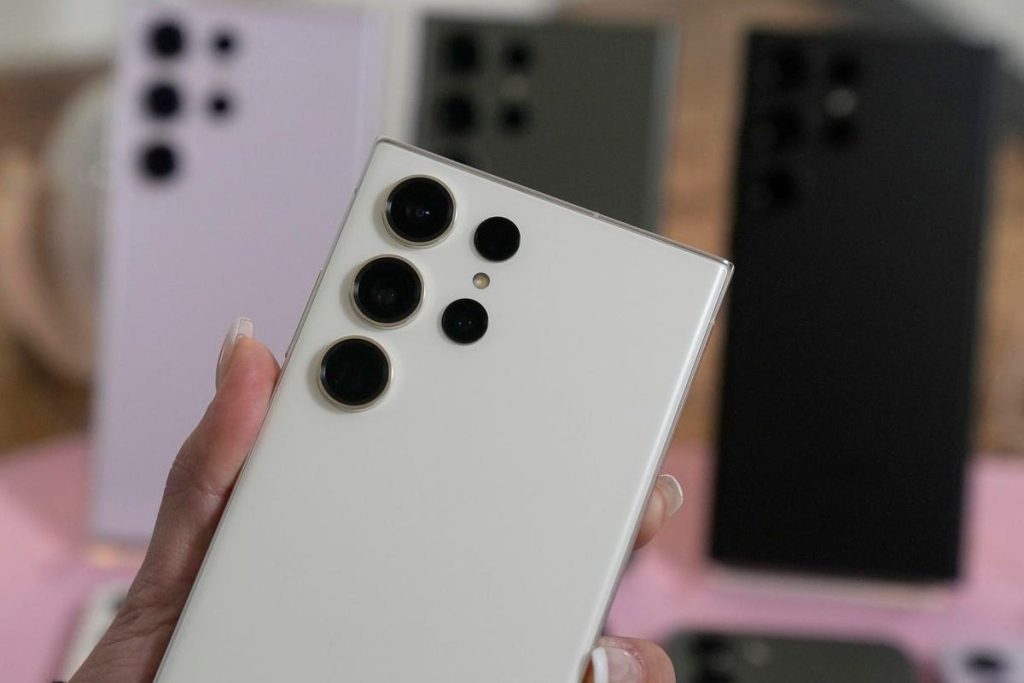08/10 Update below. This post was originally published on August 8
Samsung’s next-gen Galaxy S24 Ultra camera will have much-improved zoom performance according to recent information from the well-known leaker Ice Universe.
Posting on the social media site formerly known as Twitter, the tipster reveals that Samsung’s forthcoming smartphone flagship will receive an all-new 50-megapixel 3x telephoto camera. This is a potentially massive upgrade from the 10-megapixel version currently installed in the Galaxy S23 Ultra and should result in much-improved photo quality in the important 3x – 10x zoom range.
The news backs up a now-deleted tweet from the same leaker that expressed “full confidence” that Samsung has improved the 3x tele camera, bringing a significant improvement to the 3x to 10x zoom range.
“The answer is: 3x, I have full confidence that the Galaxy S24 Ultra has improved the performance of the 3x camera, which means that the image quality of 3x~10x will bring a significant improvement.”
The current Galaxy S23 Ultra is well-known for its powerful long-range zoom capabilities, made possible thanks to its separate 10x periscope lens. However, it doesn’t fare so well at lower magnifications, as revealed by testing site Dxomark which notes:
“The S23 Ultra lagged behind the competition at close range, where we would have expected better results, given the primary camera uses a 200MP sensor that should provide excellent digital zooming capabilities.”
A radically upgraded 3x camera sensor should make a huge difference in the 3x to 10x range. The leap from 10 megapixels to 50 megapixels is very significant and should enable the 3x camera to capture much more detail, which will boost the smartphone’s digital zoom capabilities across the entire zoom range.
However, unless the new sensor is significantly larger than its Galaxy S23 Ultra counterpart, there’s a possible negative effect on low-light performance due to its much smaller pixels. Samsung could mitigate this through techniques such as pixel-binning, software processing or deploying a brighter, higher-performance lens to the 3x camera.
Significant advances in software processing have already been predicted in previous leaks, along with a variable aperture primary lens and the possibility of a new “variable zoom” telephoto lens. With these big changes in mind, next year’s Galaxy S24 Ultra is already shaping up to be an exciting release for camera enthusiasts.
08/10 Update: According to new information from seasoned tipster Yogesh Brar it appears that not all Galaxy S24 customers will be able to expect the same experience from their new Samsung flagships.
In a recent tweet, the leaker predicts that all three Galaxy S24 models (Galaxy S24, Galaxy S24+ and Galaxy S24 Ultra) will be made available in both Snapdragon 8 Gen 3 and Exynos 2400 variants.
While the Galaxy S23 Ultra was fitted with Snapdragon chips in all regions, it now appears that Galaxy S24 smartphones may revert to Samsung’s previous position of providing different hardware depending on the region where the smartphone is sold. Typically, North American customers receive the higher-performing Snapdragon variants, along with South Korea and sometimes other regions too. However, customers in Europe and the UK have had to make do with Exynos-powered handsets.
This is a big deal because Samsung’s home-grown Exynos chips have a history of underperforming when compared to Snapdragon versions. Importantly, the difference in chipset can also affect camera performance, leading to the well-known testing site Dxomark, providing separate camera reviews for the Snapdragon and Exynos versions of the Galaxy S22 Ultra. In these tests, the Snapdragon variant came out four points ahead.
There’s no information yet to indicate that this discrepancy in camera performance will be repeated with the Galaxy S24 series. However, given that improved software is predicted to play a major role in improving their camera performance, it’s definitely going to be something to watch out for.
Follow @paul_monckton on Instagram
Read the full article here









